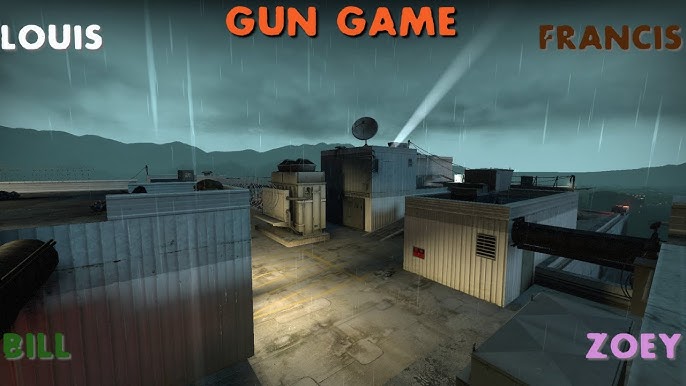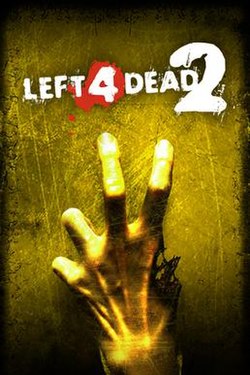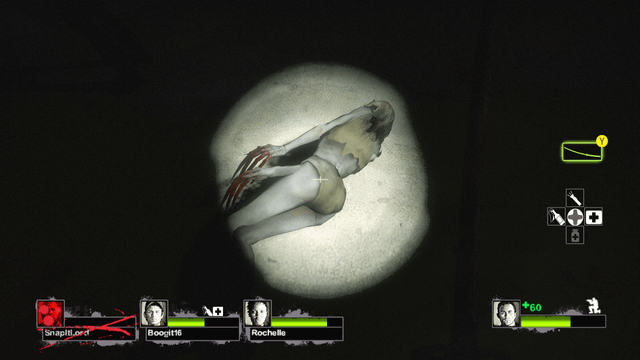The AI Director: How Left 4 Dead 2's Adaptive AI Changed the Game Left 4 Dead 2 isn't just a zombie shooter; it's a masterclass in emergent gameplay.

Left 4 Dead 2 isn't just a zombie shooter; it's a masterclass in emergent gameplay. Even years after its release, players continue to return to its frantic, cooperative action, fueled by a system that dynamically shapes each playthrough: the AI Director. As a former AI programmer who has since transitioned to broader AI research, I’ve had plenty of time to reflect on the impact of this system. What I learned developing for and playing L4D2 shaped my understanding of adaptive systems in a fundamental way.
A tense moment in Dark Carnival, orchestrated by the AI Director.
What is the AI Director?
At its core, the AI Director in Left 4 Dead 2 is a sophisticated system responsible for dynamically adjusting the game world based on player actions. Unlike scripted sequences or predetermined enemy placements, the Director constantly monitors a range of factors – player health, ammo levels, progress through the level, even the overall "intensity" of the current situation – and uses this data to influence everything from the number and type of zombies spawned to the availability of weapons and supplies.
Imagine a virtual dungeon master, constantly observing your party and tweaking the challenges to provide the most engaging (and often terrifying) experience possible. The AI Director achieves this by controlling several key parameters. It dictates the spawn rate of common infected, the appearance of special infected (Hunters, Smokers, Tanks, etc.), and the placement of helpful resources like medkits, ammunition, and weapon upgrades.
The concept of "intensity" is also central to the Director's operation. This value acts as a kind of overall difficulty setting that fluctuates based on player performance. A team breezing through a level with full health and ample ammo will likely see a spike in intensity, leading to tougher challenges. Conversely, a struggling team might be granted a brief respite, with fewer zombies and more readily available supplies. This constant ebb and flow keeps players on their toes and ensures that no two playthroughs are ever exactly alike.
 A simplified illustration of the AI Director's function.
A simplified illustration of the AI Director's function.
The Magic of Emergent Storytelling
The true genius of the AI Director lies in its ability to generate unique and memorable player experiences that feel surprisingly organic. It's not about crafting a pre-determined narrative; it's about creating a framework within which countless stories can emerge.
Consider these scenarios, all made possible by the AI Director:
- Dark Carnival Cornfield: Picture this: your team is limping through the darkened cornfield, health bars flashing red. Ammunition is scarce, and the tension is palpable. Suddenly, the distant sounds of fireworks erupt, and a horde of zombies pours out of the stalks, their silhouettes illuminated by the colorful explosions. This isn't a scripted event; it's a dynamic consequence of the Director recognizing your vulnerable state and seizing the opportunity to create a moment of sheer panic.

- The Parish Rooftops: You’re pinned down on the rooftops in The Parish, fighting off wave after wave of infected. Ammo is running critically low, and panic starts to set in. Just as you're about to run dry, a conveniently placed ammo cache appears, seemingly out of nowhere. This timely intervention, orchestrated by the AI Director, can be the difference between survival and a team wipe.

- Swamp Fever Witch Encounter: Stumbling through the murky swamps of Swamp Fever, you round a corner and face a terrifying sight: a Witch, blocking a narrow doorway. The flickering light of a distant fire casts eerie shadows, amplifying the tension. Do you risk a direct confrontation, or try to find another way around? This sudden, unexpected encounter forces a difficult tactical decision, showcasing the Director's ability to create unpredictable and challenging situations.

These are just a few examples of the countless emergent scenarios that the AI Director can create. It's this dynamic and unpredictable nature that contributes so heavily to L4D2's incredible replayability and lasting appeal. You never quite know what to expect, and that's a large part of what keeps the game so engaging.
Limitations and Criticisms
Despite its undeniable brilliance, the AI Director wasn't without its critics. One common complaint was the perception of "rubber banding," where the difficulty seemed to artificially adjust to keep players on a knife's edge, regardless of their skill. This could manifest as sudden, inexplicable spikes in zombie spawns or the seemingly random appearance of powerful special infected.
Another issue was the predictability of certain events. For example, some players noticed that hordes would often spawn immediately after a safe room door was opened, or that Tanks would frequently appear in the same general locations. While these patterns weren't always consistent, they could detract from the feeling of genuine unpredictability.
These criticisms highlight the limitations of AI in understanding the nuances of player experience. The AI Director operated based on a set of pre-defined rules and parameters, and it wasn't always able to perfectly account for the complex interplay of player skill, teamwork, and luck. This sometimes led to situations that felt unfair or contrived. The AI Director could only measure player state not player skill or intention.

Legacy and Inspiration
Despite its imperfections, the L4D2 AI Director left an undeniable mark on the gaming landscape. Its success paved the way for other games to experiment with dynamic difficulty systems and procedural content generation.
Games like Vermintide and Back 4 Blood (created by the same developers) have adopted similar approaches, albeit with their own unique twists. Vermintide, for example, uses a "Director" system to control the flow of enemies and events in its cooperative melee combat, while Back 4 Blood features a "Card System" that introduces modifiers to each run, adding an element of unpredictability and strategic decision-making. These systems refine and expand upon the core principles established by the L4D2 AI Director, demonstrating its enduring influence on game design.
Back 4 Blood attempted to build upon the AI director using "corruption cards" that would alter various gameplay aspects in an attempt to improve variability. The intentions were good, but the card system never felt as integrated and seamless as the system present in L4D2.

Conclusion
The AI Director in Left 4 Dead 2 was more than just a clever piece of code; it was a groundbreaking system that redefined the possibilities of adaptive AI in games. It demonstrated the power of dynamically adjusting the game world to create engaging and personalized player experiences. While not without its flaws, the AI Director's legacy continues to inspire game developers to push the boundaries of what's possible with AI. It offered an early glimpse into the potential for adaptive systems to create truly emergent and unforgettable gameplay moments. As I continue my work in AI research, the lessons I learned from the AI Director remain a constant source of inspiration, reminding me of the transformative power of intelligent systems to shape our interactions with the digital world.

